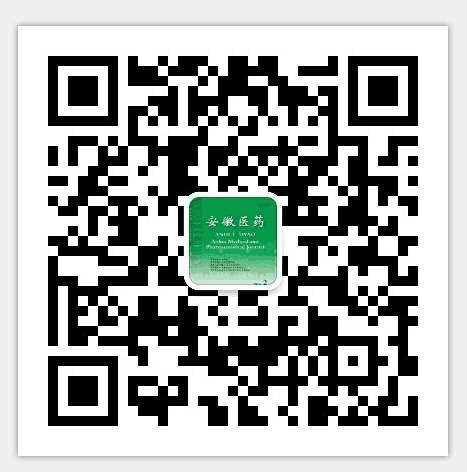| 张兵.神经肌肉电刺激联合康复训练对脑卒中 48例神经功能、上肢运动功能及血清脑源性神经营养因子、中枢神经特异蛋白的影响[J].安徽医药,2024,28(6):1235-1238. |
| 神经肌肉电刺激联合康复训练对脑卒中 48例神经功能、上肢运动功能及血清脑源性神经营养因子、中枢神经特异蛋白的影响 |
| Influences of neuromuscular electrical stimulation combined with rehabilitation training on neurological function, upper limb motor function and serum BDNF and S100-β in 48 cases of cerebral stroke |
| |
| DOI:10.3969/j.issn.1009-6469.2024.06.038 |
| 中文关键词: 卒中 运动障碍 神经肌肉电刺激 康复训练 神经功能 上肢运动功能 |
| 英文关键词: Stroke Motor disorders Neuromuscular electrical stimulation Rehabilitation training Neurological function Upper limb motor function |
| 基金项目: |
|
| 摘要点击次数: 896 |
| 全文下载次数: 448 |
| 中文摘要: |
| 目的探讨神经肌肉电刺激( NMES)联合康复训练对脑卒中病人神经功能、上肢运动功能及血清脑源性神经营养因子(BDNF)、中枢神经特异蛋白( S100-β)的影响。方法选择荆州市第五人民医院 2020年 4月至 2022年 4月收治的 96例脑卒中病人,以随机数字表法分成训练组( n=48)、联合组( n=48)均予以常规药物治疗,在此基础上训练组开展康复训练,联合组实施 NMES联合康复训练治疗,治疗时间均为 12周。于治疗前、,治疗 6周及 12周后通过中国卒中量表( CSS)、上肢动作研究测试(ARAT)分别判定病人神经功能、上肢运动功能,测定患侧腕关节背伸时主动活动度( AROM)。同时测定病人治疗前、治疗 12周后血清 BDNF、S100-β水平,并对两组上述指标进行比较。结果两组 CSS评分均随治疗时间增加而逐渐降低( P<0.05), ARAT评分均随治疗时间增加而逐渐增高( P<0.05)AROM均随治疗时间增加而逐渐增大( P<0.05)且时间和组间均有交互作用( P<0.05)其中联合组治疗 12周后 CSS、ARAT评分,及 AROM分别为( 5.31±1.34)分、(34.73±6.21)分、(,14.59±3.16)°,均明显优于训练组的(,6.94±1.59)分、(31.81±5.47)分、(11.06±2.74)°(P<0.05);治疗 12周后,两组血清 BDNF水平均高于治疗前(P<0.05)血清 S100-β水平均低于治疗前( P<0.05)且联合组血清 BDNF、S100-β水平分别为( 18.83±4.52)μg/L、(0.27±0.06)μg/L,均明于训练组的( 15.76±3.39)μg/L、(0.35±01)μg/L(P<0.05)。结论对脑卒中病人实施 NMES联合康复训练,可有效调显优节血清 BDNF、S100-β水平,明显改善神经功能、上肢运动功能,显著增大 AROM。 |
| 英文摘要: |
| Objective To investigate the influences of neuromuscular electrical stimulation (NMES) combined with rehabilitationtraining on neurological function, upper limb motor function, serum brain-derived neurotrophic factor (BDNF) and central nervous sys tem-specific protein (S100-β) in patients with cerebral stroke.Methods From April 2020 to April 2022, 96 cerebral stroke patientsadmitted to the Fifth People's Hospital of Jingzhou were selected and divided into a training group (n=48) and a combined group (n=48)by the random number table method, and all of them were treated with conventional medication. On this basis, the training group underwent rehabilitation training, and the combined group underwent NMES combined with rehabilitation training treatment, and the treatment time was 12 weeks. Before treatment, after 6 weeks and after 12 weeks of treatment, the Chinese Stroke Scale (CSS) and the Action Research Arm Test (ARAT) were used to determine the neurological function and upper limb motor function of the patients, andthe active range of motion (AROM) of the affected wrist in dorsal extension was measured. Moreover, the levels of serum BDNF andS100-β were measured before treatment and after 12 weeks of treatment, and the above indicators were compared between the twogroups were compared. Results The CSS scores of both groups gradually decreased with increasing treatment time (P<0.05), the ARAT scores and AROM gradually increased with increasing treatment time (P<0.05), and there was an interaction effect of time and group (P<0.05). After 12 weeks of treatment in the combined group, the CSS, the ARAT scores and the AROM scores were (5.31±1.34)points, (34.73±6.21) points, and (14.59±3.16)°, respectively, which were significantly greater than those iin the training group [(6.94±1.59) points, (31.81±5.47) points, and (11.06±2.74)°, respectively] (P<0.05). After 12 weeks of treatment, the levels of serum BDNF lev els in both groups were greater than those before treatment (P<0.05), the serum S100-β levels were lower than those before treatment (P< 0.05), and the serum BDNF and S100-β levels in the combined group were (18.83±4.52) μg/L and (0.27±0.06) μg/L, respectively,which were significantly greater than those in the training group [(15.76±3.39) μg/L and (0.35±0.11) μg/L] (P<0.05). Conclusion NMES combined with rehabilitation training for cerebral stroke patients can effectively regulate serum BDNF and S100-β levels, obvi ously, improve neurological function and upper limb motor function, and significantly increase AROM. |
|
查看全文
查看/发表评论 下载PDF阅读器 |
| 关闭 |
|
|
|


